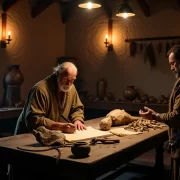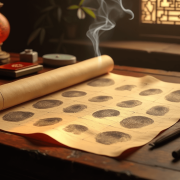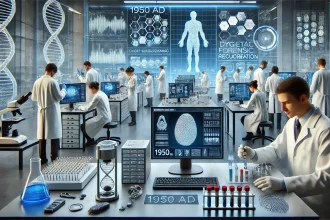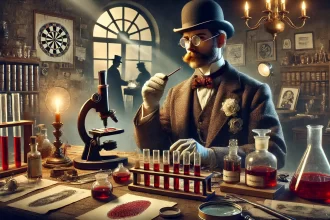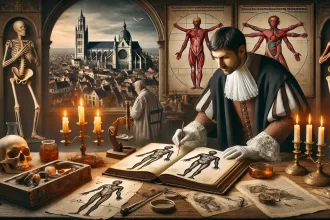Introduction
How did a 6th-century emperor revolutionize the relationship between medicine and law? Justinian’s Corpus Juris Civilis, the cornerstone of Byzantine jurisprudence, reshaped the legal landscape by formalizing the role of physicians as expert witnesses. This groundbreaking legal compilation elevated the status of medical professionals, emphasizing impartiality and specialized knowledge in legal proceedings.
This article explores the historical context of Justinian’s reforms, the evolving role of physicians in Roman law, and the lasting impact of these changes on modern forensic practices. Discover how the principles of equity and expertise introduced during Justinian’s reign continue to influence today’s legal systems.
- Introduction
- Historical Context of Justinian’s Law Code
- Physicians as Expert Witnesses Before Justinian
- Justinian’s Reforms Regarding Medical Testimony
- Impact and Legacy of Justinian’s Reforms
- Conclusion
- FAQs
- Q1. What was the significance of Justinian’s Corpus Juris Civilis?
- Q2. How did Justinian’s reforms impact medical testimony?
- Q3. What criteria were established for physicians to act as expert witnesses?
- Q4. How does Justinian’s legal code influence modern forensic practices?
- Q5. Why was medical testimony important in Byzantine legal proceedings?
- References & Further Readings
Historical Context of Justinian’s Law Code
The Byzantine Empire in the 6th Century
The Byzantine Empire, under Emperor Justinian I (527–565 CE), was a period of political, cultural, and legal transformation. Following the collapse of the Western Roman Empire, Justinian sought to restore unity by reclaiming territories and reforming governance. Law became a cornerstone of this effort, with Justinian aiming to codify and simplify centuries of Roman legal traditions.
Compilation of the Corpus Juris Civilis
Justinian’s legal reforms culminated in the Corpus Juris Civilis, a comprehensive legal code comprising four parts:
- The Codex: A collection of imperial enactments.
- The Digest (Digesta): Extracts from the writings of classical jurists.
- The Institutes (Institutiones): A textbook for law students.
- The Novels (Novellae): New laws enacted after 534 CE.
This legal masterpiece served as the foundation for Byzantine jurisprudence and influenced the development of Western legal traditions for centuries.

Physicians as Expert Witnesses Before Justinian
Early Use of Medical Testimony
Before Justinian’s reforms, the use of medical testimony in Roman legal proceedings was limited. Physicians were often consulted in cases involving injuries or deaths, but their role was informal and inconsistent. The introduction of professional Greek physicians, such as Asclepiades of Bithynia in 124 BCE, marked the beginning of medical expertise in Roman society.
Limitations in Roman Law
Roman law exhibited inconsistencies regarding medical liability. While earlier laws penalized negligence, the Pandects of Justinian’s code exempted physicians from liability for unsuccessful treatments. This ambiguity reflected the evolving nature of medical testimony and its place within the legal system.
Social Status of Physicians
The status of physicians in Roman society influenced their credibility. Foreign physicians often faced discrimination, while Roman citizens from upper classes could face exile or harsher penalties for malpractice. Despite these challenges, the value of medical expertise gradually gained recognition, setting the stage for Justinian’s transformative reforms.
Justinian’s Reforms Regarding Medical Testimony
New Legal Status for Physicians
Justinian’s Corpus Juris Civilis redefined the role of physicians in legal proceedings. Medical experts were no longer considered ordinary witnesses but impartial advisors who provided specialized knowledge to assist the judiciary. This shift emphasized objectivity and the importance of expertise in legal decision-making.
Criteria for Medical Experts
To qualify as expert witnesses, physicians had to meet stringent requirements, including:
- A valid medical license.
- Demonstrated competence through clinical practice or other relevant experience.
These criteria ensured that only qualified professionals contributed to legal cases, enhancing the credibility of medical testimony.
Weight of Medical Evidence
The reforms gave significant weight to medical evidence
Impact and Legacy of Justinian’s Reforms
Immediate Effects
The Corpus Juris Civilis transformed Byzantine legal proceedings by promoting equity and justice. Its systematic approach to law encouraged the fair application of legal principles and underscored the importance of expert knowledge in resolving complex cases.
Influence on European Legal Systems
Justinian’s legal code became a cornerstone of legal education in medieval Europe. It influenced the development of civil law systems and inspired the codification of laws in kingdoms across Europe. Concepts such as ius commune (common law) and the emphasis on expert testimony can be traced back to Justinian’s reforms.
Modern Parallels
Justinian’s principles continue to resonate in modern legal systems. The idea of impartial medical experts assisting courts has become a standard practice in cases involving personal injury, medical malpractice, and forensic investigations. Criteria for expert witnesses, such as licensure and professional competence, remain essential in ensuring the reliability of expert testimony.
Conclusion
Justinian’s Corpus Juris Civilis revolutionized the role of physicians in legal proceedings, elevating them from informal advisors to impartial expert witnesses. By establishing clear criteria for medical testimony and emphasizing objectivity, the reforms laid the groundwork for modern forensic practices.
The enduring influence of Justinian’s legal code serves as a reminder of the importance of integrating specialized knowledge into justice systems. As we navigate increasingly complex legal and medical challenges, the principles established centuries ago continue to guide the pursuit of equity and informed decision-making.
How do you think historical reforms like Justinian’s influence the role of expert witnesses today? Share your thoughts in the comments!
FAQs
Q1. What was the significance of Justinian’s Corpus Juris Civilis?
The Corpus Juris Civilis unified and simplified Roman law, introducing reforms that elevated the role of physicians as impartial expert witnesses and influenced legal systems for centuries.
Q2. How did Justinian’s reforms impact medical testimony?
Justinian’s reforms emphasized the importance of objectivity and expertise, ensuring that physicians provided accurate and impartial testimony in legal proceedings.
Q3. What criteria were established for physicians to act as expert witnesses?
Physicians had to possess a valid medical license and demonstrate competence in their field, ensuring the credibility of their testimony.
Q4. How does Justinian’s legal code influence modern forensic practices?
The principles of impartiality, expertise, and standardized criteria for expert witnesses established by Justinian’s code continue to shape the role of medical professionals in modern legal systems.
Q5. Why was medical testimony important in Byzantine legal proceedings?
Medical testimony provided specialized knowledge to help courts understand complex medical issues, ensuring informed and equitable legal decisions.




